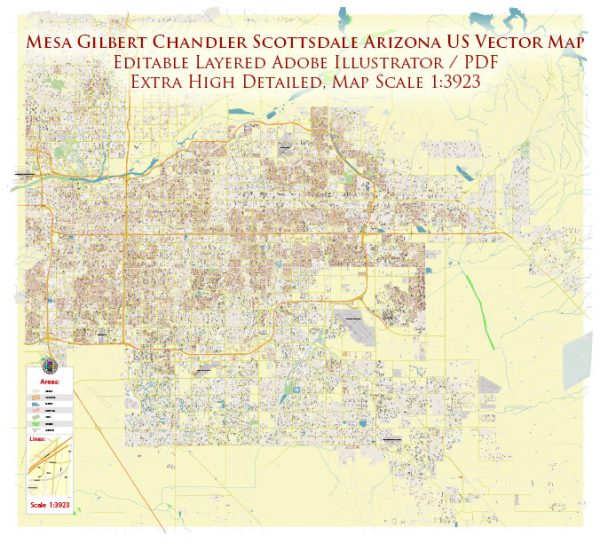The history of urban development in Mesa, Gilbert, Chandler, Scottsdale, and Tempe, Arizona, reflects the broader trends of the region and the state. Each city has its unique story, but they share common themes related to settlement, agriculture, population growth, and economic diversification.
- Mesa:
- Mesa’s history dates back to the late 19th century when Mormon pioneers settled in the area. Agriculture, particularly citrus farming, played a crucial role in Mesa’s early economy.
- The completion of the Roosevelt Dam in 1911 facilitated irrigation, contributing to agricultural expansion. The influx of residents boosted the demand for services and infrastructure, shaping Mesa’s urban development.
- The post-World War II era saw significant population growth and suburbanization. Mesa evolved into a diverse and thriving community with the expansion of industries beyond agriculture.
- Gilbert:
- Originally an agricultural community, Gilbert was known for its cotton farming in the early 20th century.
- Like many other cities in the region, Gilbert experienced post-war population growth, and the demand for housing led to suburban development.
- The transition from an agricultural economy to a more diversified one, including retail and technology sectors, has been a key aspect of Gilbert’s urban development.
- Chandler:
- Chandler’s history is closely tied to its founding by Dr. A.J. Chandler in 1912, who planned the city and attracted settlers with the promise of an advanced irrigation system.
- Agriculture, including cotton and alfalfa, was the backbone of Chandler’s economy for decades. The city grew steadily, and the completion of the San Marcos Hotel in 1913 contributed to its appeal.
- In the latter half of the 20th century, Chandler experienced rapid growth and a shift towards a more diverse economic base, including technology and manufacturing.
- Scottsdale:
- Scottsdale’s early history includes ranching and agriculture, but the city’s reputation as a resort destination began in the 1930s with the opening of the Jokake Inn, later to become the Phoenician Resort.
- The post-war period saw Scottsdale’s transformation into a tourism and recreation hub, attracting visitors and retirees. The city’s commitment to preserving its natural beauty and promoting cultural events has been a defining feature of its urban development.
- Tempe:
- Tempe’s history is closely linked to the establishment of Arizona State University (ASU) in 1885. The presence of the university has been a major factor in shaping Tempe’s identity and driving economic development.
- The construction of the Mill Avenue Bridge in 1931 facilitated connections between Tempe and neighboring communities. Subsequent growth in population and infrastructure was influenced by the university’s expansion.
- Today, Tempe is a vibrant city with a mix of residential, commercial, and educational developments.
Overall, these cities in the Phoenix metropolitan area have experienced dynamic urban development, transitioning from agricultural roots to diverse economies with a focus on technology, education, and tourism. The region’s growth has presented challenges related to infrastructure, transportation, and sustainability, which continue to shape the urban landscape.


 Author: Kirill Shrayber, Ph.D.
Author: Kirill Shrayber, Ph.D.